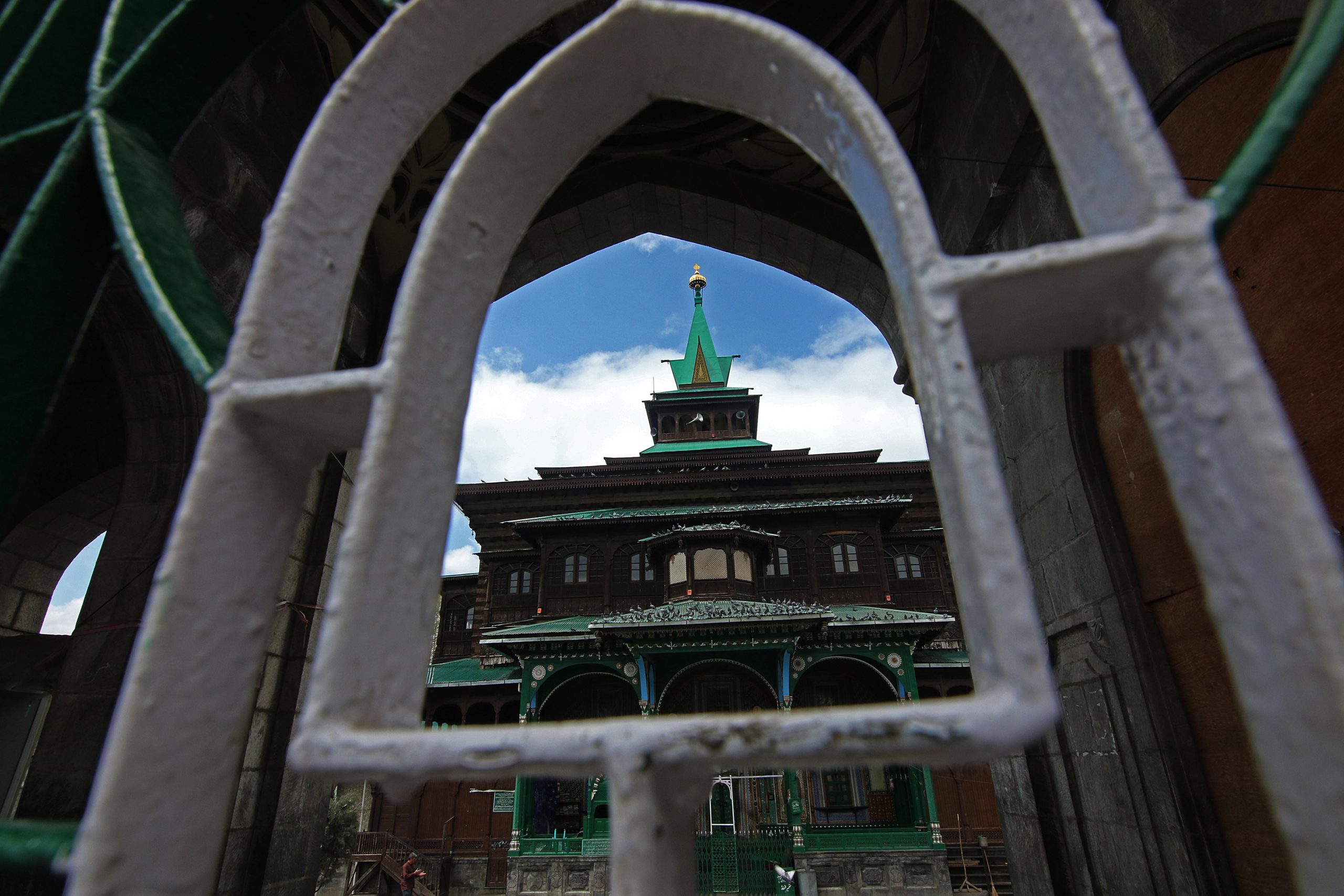Kawaja Farooq Renzushah
The remarkable 1321 CE grand spiritual revolution in Kashmir’s history led to Introduction of doctrine of Hanafiyat coinciding with the arrival of Hazrat Bulbulshah (RA). The most memorable movement in spiritual folklores of Kashmir when King of Kashmir Hazrat Sultan Sader ud din Rinchanshah met Hanafi Sufi saint on the banks of river Jehlum near Bhudhgaer has changed entire civilization landscape of this paradise by enhancing its spiritual stature in world. This revolution proved herald for unity, peace, love and mutual co existence.
Hazrat Abdul Raham Abi Rahamn Sharaf al-Din Bulbul Shah (RA) laid foundations of Hanafi Fiqa Mazhab e Hanafia giving pre dominant position to Ijma, Qayas, Ra’y and Uruf where under all local traditions were absorbed in Fiqa Hanafiyat with pride and honour. The Sufi traditions of Tareeqat e Shah Jeelan Gausul ul Azam and Tareeqat e Hazrat Ibn e Arabi attracted people towards this highly knowledgeable doctrine. Hazrat Bulbulshah presented Masnand of Imam e Azam to the king whereby he understood concept of peace, love and unity.
When we talk of the year 1321 CE spiritual revolution it imbibed sprit of mutual brother hood and made people aware about spiritual knowledge for which fertile ground was already available in Kashmir. The pursuit to gain further spiritual knowledge further received momentum when Sufi saints started arriving from central Asia through Silk route. In central Asia, rise of Timour and his prosecution of people of Abu Hanifa Fiqa constrained most revered and distinguished sufi Awaliyas to migrate from their own land. When they came to know about impact of Hazrat Bulbulshah in Kashmir they chose this paradise as their destination.
The doctrine of Hanafiyat got more strengthened after fifty years of era of hazrat bulbulshah (RA) and Hazrat Sultan Sader ud din, when another towering Hanafi Sufi personality Hazrat Mir Syed Ali Hamdani Amir kabir along with his son Mir Muhammad Hamadani and other companions arrived to Kashmir. Their choice to select Kashmir as their spiritual destination yielded remarkable results. They found Kashmir spiritually more secure and pregnant than their own place where Taimur had launched campaign against Hanafi sufi Icons. The king of Kashmir Shahab din shah who had established sway of Kashmir up to khurasan gave same esteem to Hazrat Shah Hamdan Amir Kabir as was given to Hazrat Bulbulshah by king Sader ud din Rinchanshah in 1321 cE. Since then Kashmir was ruled by kings adhering Hanafi doctrine of Imam e Azam (RA).
The local Hanafi sufis and Rishis from the time of Hazrat Bulbulshah (RA) and Hazrat Shah Hamdan gained knowledge not only from the saints who arrived from central Asia but also of their own made deep study of books of all Fiqa and literature of Arabia, Persia ,Bagdad and Basra to establish spiritual way of life in Kashmir.
The Significant role of Shaikh Nur al-Din Wali, Zain shah Wali, Baba Payam ud din, Baba nasir ud din gazi, Reshies, Sufies and more prominently during later centuries by Shaikh Hamza Makhdum further enriched mazhab e Hanafiyat along local traditions in Kashmir.
The pioneering role of hundreds of leading Sufi lights of Kashmir who understood value of jurisprudence of Hazrat Al Naouman Abu Hanifa Ibn e Sabith ibn e Zouta Ibn e Murzaban (RA) shaped Kashmir as one of the ideal society of world which believed in intellectual interactions and high order of spiritual knowledge. The approval and sanction for adoption of local traditions through the windows of Qayas, Ijmah, Ra’y and Uruf influenced highly learned intellectuals of Kashmir.
As already pointed out that the biggest triumph of the acceptance of Hanafi doctrine in Kashmir is witnessed in Kashmir when no less than king of Kashmir his Queen and his entire administrative structure followed spiritual commands of Hazrat Bulbulshah in Kashmir. This historically acclaimed spiritual revolution occurred immediately after victory of joint forces of Buddhist, Hindu’s and Neo Muslims who defeated Mangol Forces headed by grandson of Halqou khan Zulqadar khan nicknamed zulja or Dulcha. His terror Communist like non faith army comprised of 70 thousand savage cannibal brutes fully equipped with deadly weapons set entire Srinagar capital on fire, raped women and killed old, young and children .He imprisoned Hindu, Buddhist and Neo Muslims.
The earlier King Simha Deva had abandoned kashmiries and escaped to Kishtwar along blue sapphire treasure to save his life. The prince of Tibet, Ladakh who had his spiritual influence up to Nouha Mountains of youna china belt, rushed to Kashmir on spiritual command from Kashgar Mountains through silk route to rescue people of Kashmir from invasion and Tyranny of Zulja. The Spiritual power and the unity of Buddhist, Hindu’s and Muslims demonstrated at such critical movement proved so effective that heavily armed terror forces of Zulcha of Halaqou dynasty was buried under snow graves in Banihal Pass when it was advancing to capture North India.
The victory of joint resistant spiritual power of Muslims, Hindu’s and Buddhists against faithless Mongols enhanced stature, esteem and valour of new king of Kashmir Hazrat Sultan Sader ud din Rinchenshah amongst people of Kashmir. Historians eulogize him as Lion of Kashmir who saved people at critical juncture; G.M. D Sufi termed him as one of the brilliant, benevolent, passionate, popular, brave warrior and intellectual Kings of his time.
Conversion of King of Kashmir to Islam was one of the rare examples of the time which was only witnessed in Mecca when king of Mecca also converted to Islam under spiritual sway. When learned King of Kashmir understood message of peace communicated to him by Bulbulshah and he studied Hanafi doctrine of Islam it convinced him that Islam believed in mutual co existence which was vital for respecting all faiths and tie them in one united spiritual power.
When King was convinced, consequently entire administration followed him. It was spiritual revolution which made intellectuals, ministers, tradesmen, and people at large to adopt these spiritual paths. His minister Rawanchand Raina brother of Kota Rani also followed the same doctrine from whose generation Mahaboob Aalm has descended. Since then Hanafi Madhab started flourishing and growing. It was further enriched by Hanafi scholars like Shaikh Yaqub Sarfi, Jenab hazrat Khaki, Mulla Ahmad buried on sides of Bulbulshah, Jenab Kashgari brothers buried in Ishber, Khankah Moula, Bilad e Rumi Rajouri kadal.
Muhammad Mohsin Fani, Mulla Kamal Kashmiri and Mulla Jamal and thousands of others whose detailed reference shall be made in future. The role played by Shah Madrasas as Madrasa Sultan Shihab al-Din, Madrasa Sultan Qutb al-Din, Madrasa Sultan Hasan Shah, Madrasa Sultan Sikandar/ Urwat al-Wasqa, Dar al-ulum of Sultan Zain al-Abidin/ Madrasa Dar-us-Shifa, Darasgah-i-Mulla Haider, Madrasa Khwajagan-i-Naqshband, Madrasa-i-Syed Mansur and Madrasa-i-Mulla Keunal and Mulla Jamal are worth mentioning.
The Hanafi schools as described in Risala Nasikh-wa-Mansukh of Mir Syed Ali Hamadani. Hamadani’s and Zakhirat al-Muluk need to be understood from reasoning Ra’y point of view as it got engraved in hearts of people. Shaikh Yaqub books like Matlub ul-Talibin made its remarks not only in Kashmir but in entire subcontinent. Shaikh Murad Kashmiri’s “Jami al-Mufradat (a dictionary of Quranic words)” also played great role to enrich Hanafi school of thought. The contribution in school of Hanafiyat by Shaikh Moin al-Din in “Zubdat al-Tafasir in Arabic and Persian” proved to world about high calibre of kashmiri scholars in the field of spiritualism.





